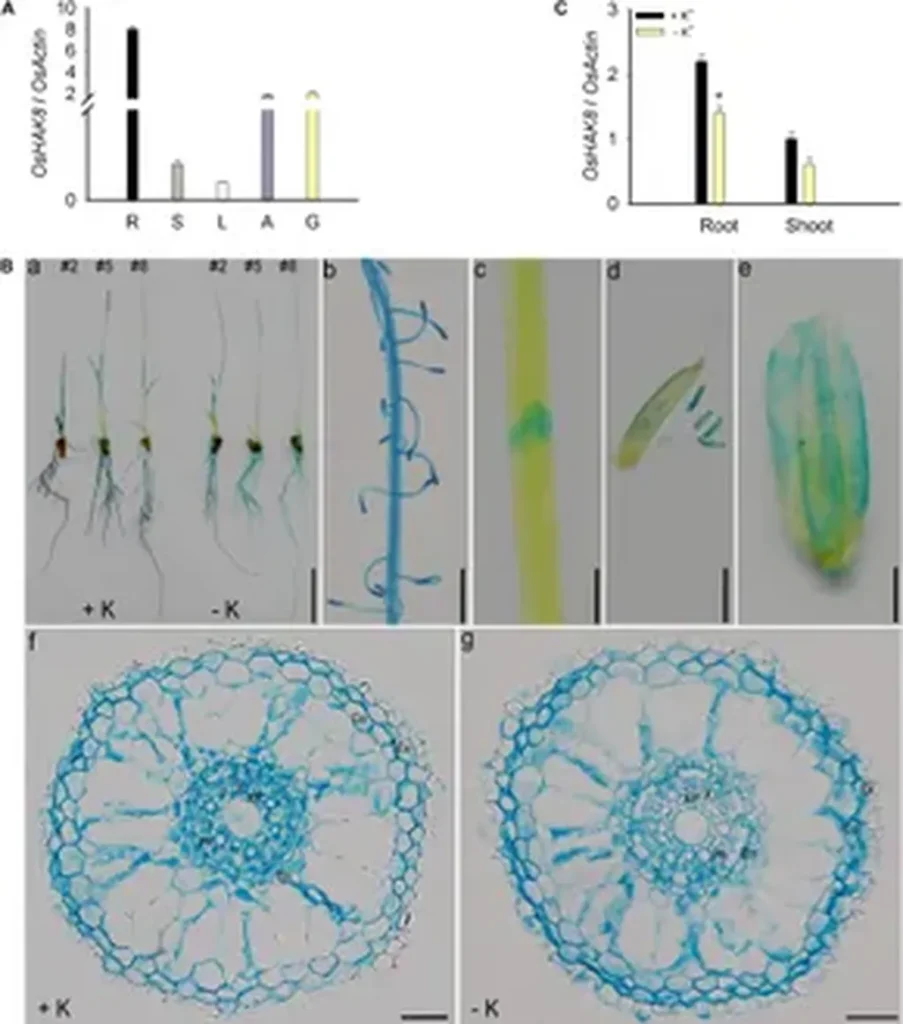In the heart of rice plants, a tiny protein named OsTET8 has been discovered to play a significant role in root development, potentially opening new avenues for agricultural innovation. Researchers, led by Ran Meng from the State Key Laboratory for Conservation and Utilization of Subtropical Agro-Bioresources at Guangxi University, have uncovered that OsTET8 acts as a brake on root growth, a finding published in the journal ‘Rice’.
The study reveals that OsTET8, a member of the tetraspanin family, is predominantly expressed in the root elongation zone. When the researchers knocked out the OsTET8 gene in rice plants, they observed a significant increase in primary root length, lateral root density, and adventitious root formation. Conversely, overexpressing OsTET8 in the roots suppressed these characteristics. “This dual effect suggests that OsTET8 is a key regulator of root development in rice,” Meng explains.
The implications for agriculture are substantial. Roots are crucial for water and nutrient uptake, and their development directly impacts plant growth and yield. By understanding and manipulating the OsTET8 gene, scientists may be able to develop rice varieties with optimized root systems, leading to improved water and nutrient uptake efficiency. This could be particularly beneficial in drought-prone areas or soils with low nutrient content.
The study also sheds light on the molecular mechanisms underlying OsTET8’s role in root development. Cytological analyses revealed that OsTET8 influences cell proliferation in the root cortex. Furthermore, transcriptomic profiling identified differentially expressed genes involved in intracellular redox homeostasis and jasmonic acid (JA) biosynthesis/signaling. “Our findings suggest that OsTET8 coordinates redox homeostasis and JA signaling pathways to regulate root development,” Meng adds.
This research not only advances our understanding of rice root development but also highlights the potential of tetraspanins as targets for crop improvement. As Meng notes, “Tetraspanins are evolutionarily conserved proteins, so our findings may have implications for other plant species as well.” Future studies could explore the role of OsTET8 homologs in other crops, paving the way for broader agricultural applications.
In the quest for sustainable and productive agriculture, every discovery counts. The identification of OsTET8 as a negative regulator of root development is a significant step forward, offering new possibilities for enhancing crop resilience and yield in the face of a changing climate and growing global population.

